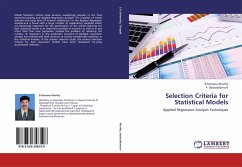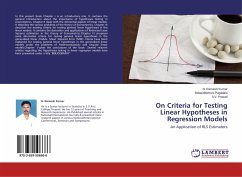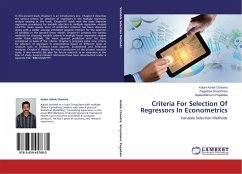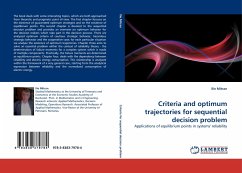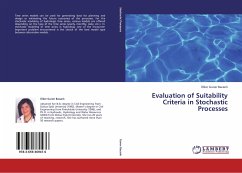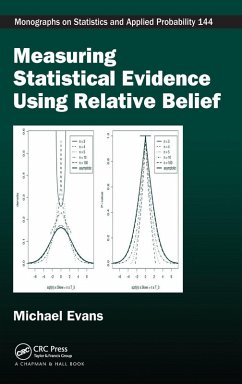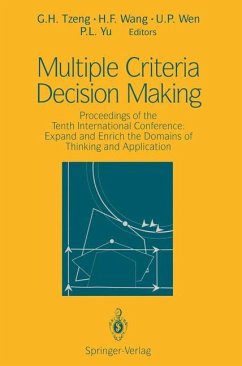
Statistical structures and consistent criteria for checking hipothese
Versandkostenfrei!
Versandfertig in 6-10 Tagen
19,99 €
inkl. MwSt.

PAYBACK Punkte
10 °P sammeln!
In this work are considered the statistical structures, questions of their separability and subordination, as well as consistent criteria for checking hypotheses and conditions of their existence. It is known that having a sample we can propose several alternative hypotheses about the theoretical distribution, one of which should be preferred to the others. The task of choosing one from many hypotheses solved building the statistical criteria, usually based on a selection of finite volume infallible conclusions about distribution made can not be, this a risk always exists choose the wrong hypo...
In this work are considered the statistical structures, questions of their separability and subordination, as well as consistent criteria for checking hypotheses and conditions of their existence. It is known that having a sample we can propose several alternative hypotheses about the theoretical distribution, one of which should be preferred to the others. The task of choosing one from many hypotheses solved building the statistical criteria, usually based on a selection of finite volume infallible conclusions about distribution made can not be, this a risk always exists choose the wrong hypothesis. Suppose we put forward the hypothesis and given criterion for testing these hypotheses. Recall: they say that there was an error of -th kind of the criterion , if criteria rejected the .hypothesis. The probability of error of -th kind of criterion is the number Certainly better than the criteria for less then the probability of its errors, then eats . . Clear that too many criteria will be incomparable. When you try to reduce the probability of errors not excluded the possibility of increasing the other. This character are all widely known generally accepted approach



